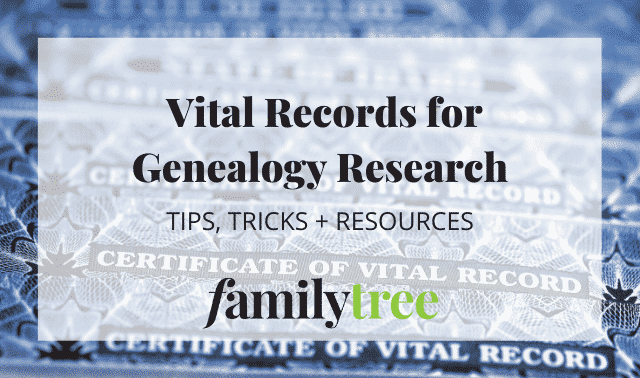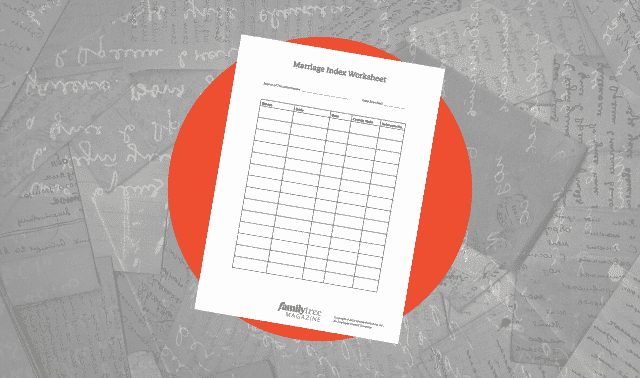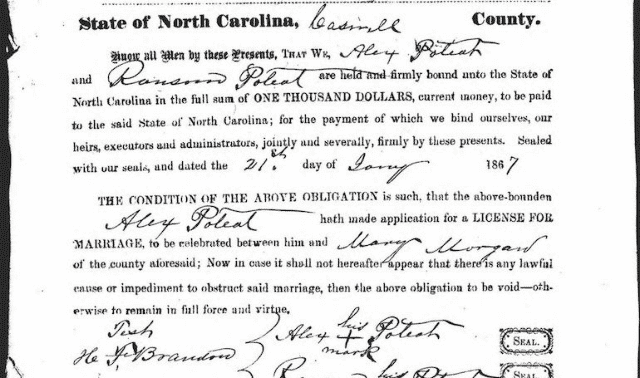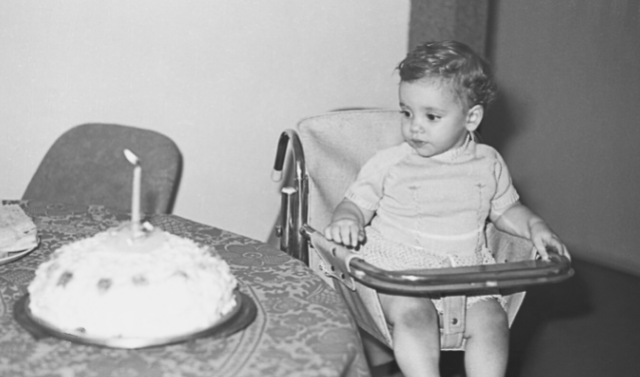Sign up for the Family Tree Newsletter Plus, you’ll receive our 10 Essential Genealogy Research Forms PDF as a special thank you!
Get Your Free Genealogy Forms
"*" indicates required fields

Marriage licenses can provide genealogy clues beyond the date of the wedding. They’re typically issued by the county, parish (in Louisiana), or municipality (in many New England states and independent cities). The groom customarily applied for the license, which was valid for a limited period of time.
The minister, justice of the peace or other legally authorized person who performed the marriage ceremony completed the document with the date and his signature. In some places and time periods, witnesses had to sign the document as well. The completed document, called a marriage return, was then returned to the county or other issuing office. The document contents were copied into a marriage book or register, which was usually indexed by both the groom’s and bride’s names, and the original document returned to the couple. In some cases, however, the issuing office created a separate certificate for the couple.
Remember that a clerk transcribing information from the original document into a county marriage book may have introduced errors or omitted information. Your request for a copy of a marriage document could result in a computer-generated document created from transcribed information, another way to introduce transcription errors. Try to get a copy of the original document whenever possible.
Witnesses may be the couple’s relatives, whom you’ll also want to research. If a clergy member performed the ceremony, investigate his affiliation with a church. Church membership, sacramental and other records may contain additional details, including names of parents and siblings.
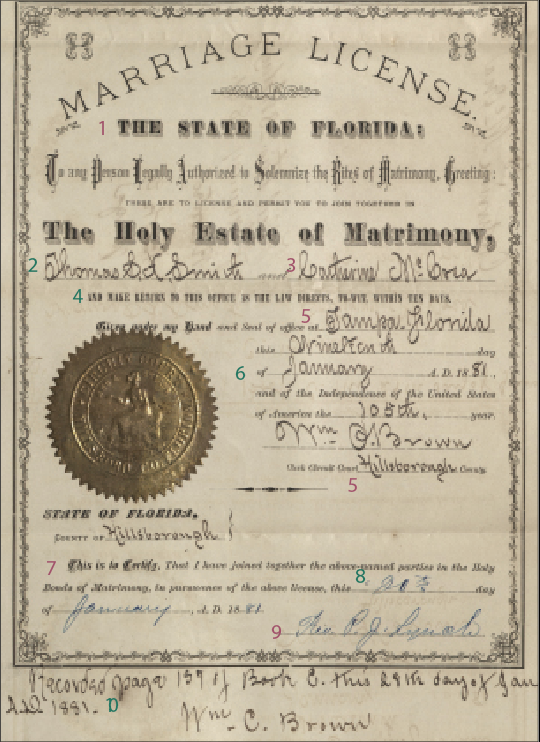
- County or state marriage laws when the wedding occurred will inform you about age restrictions or residency requirements.
- This name will be entered in the groom index for that jurisdiction. Some licenses state his marital status, such as bachelor or widower.
- Marriage licenses are a great source for the bride’s maiden name, although a previously married woman will normally use the prior husband’s surname. The use of a title such as “Mrs.” is a sure sign of a previous marriage. A male witness may be the bride’s brother or brother-in-law, potentially leading you to the bride’s parents.
- The ceremony had to be performed within a specified time period. A license that doesn’t include the marriage return information probably expired (or in some cases, the license may have been “reconstructed” after a records loss). The wedding may never have occurred or another license was issued.
- A jurisdictional name such as a county may provide a geographical pointer to other records, such as engagement and wedding announcements in local newspapers or land and property records (most likely for the groom).
- Use the issuance date (don’t mistake this for the marriage date) to calculate the effective period of the license.
- The jurisdiction shown on the marriage return indicates where the completed marriage was recorded.
- The official date on which the marriage was performed is the date you’ll note in your records.
- An officiant with a title such as Rev. or Minister of the Gospel (M.G.) could lead you to membership rolls and other records from your ancestor’s church.
- This document bears a notation that the clerk entered the marriage information in a county marriage book, which can help you locate the original index.
A version of this article appeared in the July/August 2014 issue of Family Tree Magazine.
Related Reads
ADVERTISEMENT

